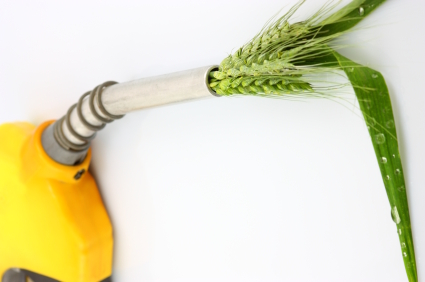|
With the end of 2011 and with 2012 ahead of us, with endless possibility, a new edition of the green indicator is in place. In this number we will have a look at the new concept of tandem catalysis, structured surfaces for sequential reaction, and venture a guess on where these may be used in the future. We will consider the feasibility of using tobacco as an energy crop for the biodiesel supply chain.
/ Christian Hulteberg
Unexpected help in the biodiesel supply chain
There have been a lot of discussions on the topic of oil supply to the biodiesel industry. The fuel vs. food debate has had its influence, as well as fundamental questions on total supply, and the use of non-traditional agricultural soil is to be preferred. A lot of this discussion has focused on jatropha as an alternative, high yielding crop; the crop is also poisonous. This is both an advantage and a disadvantage as it both “kills” the fuel vs. food debate and renders the resulting pressing cake unsuitable for fodder applications.

As a suggestion, researchers and agronomists are investigating tobacco as an alternative crop for oil and energy production. As jatropha, tobacco can grow on marginal soil and is therefore not competitive with traditional food crops. Its oil yield is also very high compared to other oil crops, with yield in the 2000 l/ha range compared to 1000 l/ha for rapeseed, 600 l/ha for sunflower and 400 l/ha for soybean.
The crop has several advantages compared to jatropha, used here as a means of comparison. First of all, there is already a commercial growth of tobacco in many different climate zones and soil types so this experience can be used when introducing tobacco as an energy crop. Secondly, the cake residue from the growing is edible and may be used as a high protein livestock fodder. Thirdly, the crop is annual and the harvesting is therefore much easier than in the jatropha case, requiring picking of the nuts without harvesting the plant.

So what are the drawbacks then? Well, first of all the current method of planting the tobacco seeds in greenhouses for later transplantation in the field, usually by hand, need to be made more efficient and the seed need to be able to be planted directly into the soil. Secondly, producing tobacco as an energy crop will be different to growing it for human consumption and these differences will have to be understood and addressed. Thirdly, the resulting oil contain very high concentrations of linoleic acid (C18:2), as high as 75%, and the production of biodiesel from this relatively mono-fatty acid oil will have to be thoroughly understood with respect to required additives etc.
In conclusion, the current high yield of oil from tobacco and its suitability for genetic modifications, tobacco is often used as a model plant for genetic transformation, makes it a suitable energy-crop candidate for non-traditional agricultural soils. Indeed, the US DoE awarded $4.9 million to engineer tobacco for the production of vehicle fuels to Berkley in September of 2011 and much progress within this area is expected over the forthcoming years.
|



